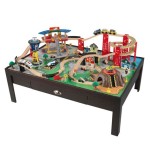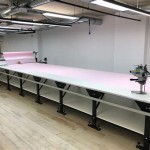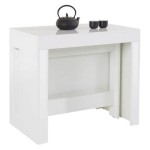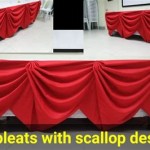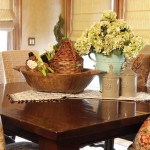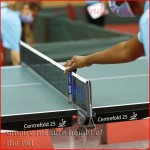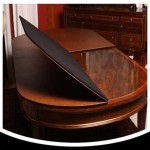Laundry Room Table Top: Functionality and Design Considerations
The laundry room, often relegated to a purely functional space, can benefit immensely from considered design elements. One such element, the laundry room table top, can significantly enhance the utility and aesthetics of this hardworking area. A well-chosen and strategically placed table top provides a dedicated surface for sorting, folding, and treating laundry, thereby streamlining the entire laundry process. This article provides a detailed exploration of laundry room table tops, covering various material options, design considerations, and installation aspects.
The inclusion of a table top in the laundry room moves beyond mere functional necessity; it contributes to creating a more organized and visually appealing environment. A cluttered laundry room can induce stress and make the already mundane task of laundry feel even more burdensome. A designated table top helps contain the chaos, offering a clear, defined area for managing clothes and supplies. Moreover, the right table top can complement the existing décor, transforming the laundry room from a purely utilitarian space into an extension of the home's overall design.
Key Point 1: Material Selection and Durability
The choice of material for a laundry room table top is paramount, impacting both its longevity and its suitability for the environment. Laundry rooms are typically subject to moisture, spills, and potential staining, therefore, durable and water-resistant materials are essential. Several options exist, each with its own strengths and weaknesses.
Laminate:
Laminate is a popular and cost-effective choice. It consists of a thin layer of decorative paper bonded to a substrate, typically particleboard or MDF. Laminate is available in a wide range of colors, patterns, and textures, allowing for easy coordination with existing cabinetry and décor. Its primary advantage lies in its affordability and ease of cleaning. However, laminate is susceptible to scratches, chipping, and water damage if the edges are not properly sealed. Prolonged exposure to moisture can cause the substrate to swell and delaminate. Therefore, selecting a high-quality laminate and ensuring proper sealing during installation are crucial for extending its lifespan.Solid Surface (e.g., Corian, Avonite):
Solid surface materials are non-porous and highly resistant to stains, moisture, and bacteria. They are made from a blend of acrylic polymers and natural minerals, creating a seamless and durable surface. Solid surface table tops are easy to clean and maintain, requiring only mild soap and water. Minor scratches can often be buffed out, restoring the surface to its original condition. The primary drawback of solid surface materials is their higher initial cost compared to laminate. However, their durability and longevity often justify the investment.Quartz:
Quartz countertops, composed of engineered stone containing natural quartz crystals bound with resin, are another excellent option for laundry rooms. Quartz is exceptionally durable, scratch-resistant, and stain-resistant. Its non-porous nature makes it highly resistant to moisture and bacteria, making it a hygienic choice for a space prone to spills. Quartz is available in a variety of colors and patterns, mimicking the look of natural stone without the associated maintenance requirements. While more expensive than laminate, quartz offers a significant upgrade in terms of durability and aesthetics.Butcher Block:
Butcher block, made from strips of hardwood glued together, provides a warm and inviting aesthetic to the laundry room. It is a durable and resilient material, but requires more maintenance than other options. Butcher block table tops must be regularly sealed with food-safe oil to prevent moisture absorption and staining. While scratches and dents can be sanded out and the surface re-oiled, neglecting maintenance can lead to warping and cracking. Butcher block adds a rustic charm to the laundry room, but its suitability depends on the homeowner's willingness to commit to regular upkeep.Tile:
Tile offers a durable and water-resistant surface for a laundry room table top. Porcelain and ceramic tiles are particularly suitable, as they are resistant to stains, scratches, and moisture. Tile is available in a vast array of colors, patterns, and sizes, allowing for extensive customization. However, tile table tops require meticulous installation to ensure a smooth and even surface. Grout lines can be prone to staining and require regular cleaning. While tile is a durable option, the installation process can be more complex and time-consuming than other materials.Key Point 2: Design Considerations and Ergonomics
Beyond material selection, the design of the laundry room table top should prioritize functionality and ergonomics. The size and shape of the table top should be tailored to the specific needs of the homeowner and the available space in the laundry room. Furthermore, the height of the table top is crucial for ensuring comfortable use and minimizing strain on the back and shoulders.
Size and Shape:
The size of the table top should be proportional to the laundry room's dimensions. A small laundry room may only accommodate a narrow table top, while a larger space can accommodate a more expansive surface. The shape of the table top can also impact its functionality. A rectangular table top is a versatile option, providing ample space for sorting and folding. A corner table top can maximize space utilization in a smaller laundry room. Consider the typical tasks performed in the laundry room when determining the appropriate size and shape of the table top.Height:
The height of the table top is a critical ergonomic consideration. A table top that is too low can cause back strain, while one that is too high can lead to shoulder and neck discomfort. The ideal height for a laundry room table top is typically between 36 and 42 inches, similar to standard kitchen countertops. However, the optimal height may vary depending on the individual's height and personal preferences. Consider simulating the laundry tasks that will be performed on the table top to determine the most comfortable height.Placement and Accessibility:
The placement of the table top within the laundry room should optimize workflow and accessibility. Ideally, the table top should be located near the washing machine and dryer to facilitate the transfer of clothes. Ensure that there is sufficient space around the table top for comfortable movement and maneuvering. Consider the proximity of outlets and lighting to ensure adequate power and illumination for laundry tasks. Avoid placing the table top in areas that obstruct doorways or walkways. The placement of the table top should contribute to a streamlined and efficient laundry process.Storage Integration:
Integrating storage solutions with the laundry room table top can significantly enhance its functionality. Consider incorporating shelves, drawers, or cabinets beneath the table top to store laundry supplies, detergents, and ironing equipment. Built-in hampers can provide a convenient place to sort dirty clothes. Over-the-table shelves can offer additional storage space for folded linens and other items. Integrating storage solutions with the table top helps to declutter the laundry room and keep essential items within easy reach.Aesthetic Considerations:
While functionality is paramount, the aesthetic appeal of the laundry room table top should not be overlooked. The table top should complement the overall design of the laundry room and reflect the homeowner's personal style. Consider the color, pattern, and texture of the table top when selecting a material. Coordinate the table top with the cabinetry, flooring, and wall paint to create a cohesive and visually appealing space. The laundry room, despite its practical purpose, can be transformed into a welcoming and aesthetically pleasing environment with thoughtful design choices.Key Point 3: Installation and Maintenance
Proper installation is essential for ensuring the longevity and stability of the laundry room table top. The installation process will vary depending on the type of table top and the existing structure of the laundry room. Furthermore, regular maintenance is crucial for preserving the table top's appearance and preventing damage.
Installation:
The installation of a laundry room table top can be a DIY project for experienced homeowners, but professional installation is often recommended, particularly for heavier materials like quartz or solid surface. The first step is to ensure that the supporting structure, whether it's existing cabinetry or a custom-built frame, is level and sturdy. The table top should be securely attached to the support structure using appropriate fasteners. For laminate table tops, it's crucial to properly seal the edges to prevent moisture penetration. For tile table tops, meticulous attention to detail is required to ensure even spacing and alignment. Professional installation ensures that the table top is properly installed, minimizing the risk of future problems.Sealing and Waterproofing:
Regardless of the material chosen, sealing and waterproofing are crucial for protecting the laundry room table top from moisture damage. Laminate edges should be sealed with edge banding or sealant to prevent water from seeping into the substrate. Butcher block table tops require regular sealing with food-safe oil to prevent moisture absorption and staining. Tile grout lines should be sealed to prevent staining and mildew growth. Even materials like quartz and solid surface, which are inherently water-resistant, can benefit from sealing to further enhance their protection. Proper sealing and waterproofing prolong the lifespan of the table top and maintain its appearance.Cleaning and Maintenance:
Regular cleaning is essential for maintaining the appearance and hygiene of the laundry room table top. Wipe up spills immediately to prevent staining. Use mild soap and water for general cleaning. Avoid using abrasive cleaners or scouring pads, as they can scratch or damage the surface. For specific stains, consult the manufacturer's recommendations for appropriate cleaning solutions. Regularly inspect the table top for any signs of damage, such as scratches, chips, or cracks. Address any damage promptly to prevent it from worsening. Proper cleaning and maintenance help to preserve the table top's appearance and prolong its lifespan.Repair and Refinishing:
Despite diligent maintenance, the laundry room table top may eventually require repair or refinishing. Minor scratches in solid surface materials can often be buffed out. Laminate chips can be repaired with patching compounds. Butcher block table tops can be sanded and re-oiled to restore their appearance. For more extensive damage, professional repair or replacement may be necessary. Regularly inspecting the table top and addressing any damage promptly can help to minimize the need for costly repairs or replacements.The laundry room table top is a valuable addition to any home, providing a dedicated surface for sorting, folding, and treating laundry. By carefully considering material selection, design considerations, and installation aspects, homeowners can create a functional and aesthetically pleasing laundry room that streamlines the laundry process and enhances the overall living experience. Choosing the right material and integrating it thoughtfully into the space transforms a purely utilitarian room into an organized and efficient area.

Diy Waterfall Butcher Block Washer Dryer Counter We The Dreamers

Diy Plywood Counter Top For The Laundry Room Featuring Vintage Revivals Ana White

Washer And Dryer Top Laundry Room Organization Farmhouse Wood Table Furniture

Tricks Make For Budget Friendly Laundry Room Redo

I Love This Easy Diy Laundry Table Top Slides Over A Washer Dryer Abbotts At Home

House Project Laundry Room And Table Helen Hou Sandí

Table Top On Washer And Dryer 40 Best Investment Ever No More Socks Falling Behind Laundry Room Design Mud Countertop

34 Laundry Countertop Ideas For Perfect Storage And Organization

Diy Waterfall Butcher Block Washer Dryer Counter We The Dreamers

Diy Laundry Room Shelves And Storage Ideas For A Small Space Angie S Roost
Related Posts

